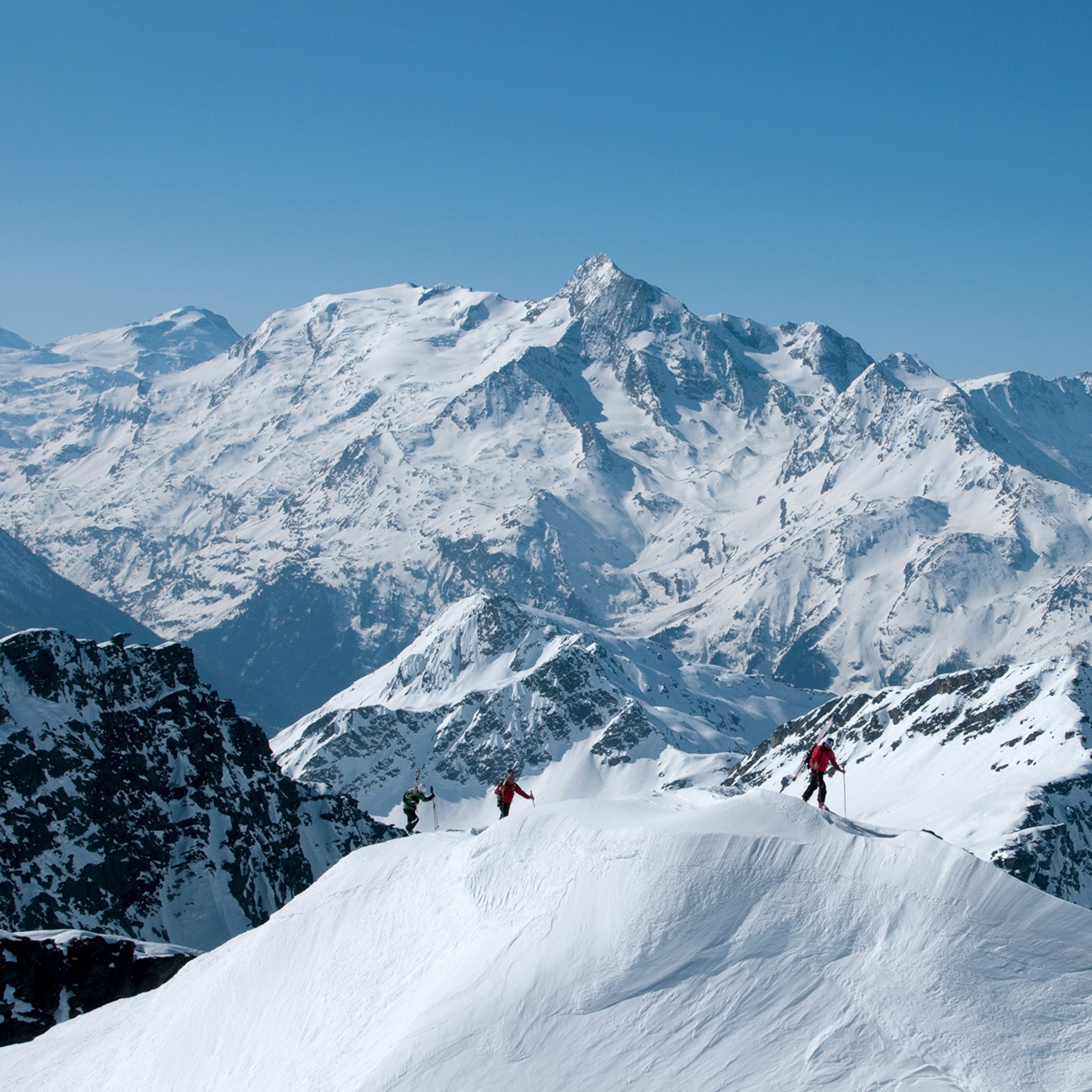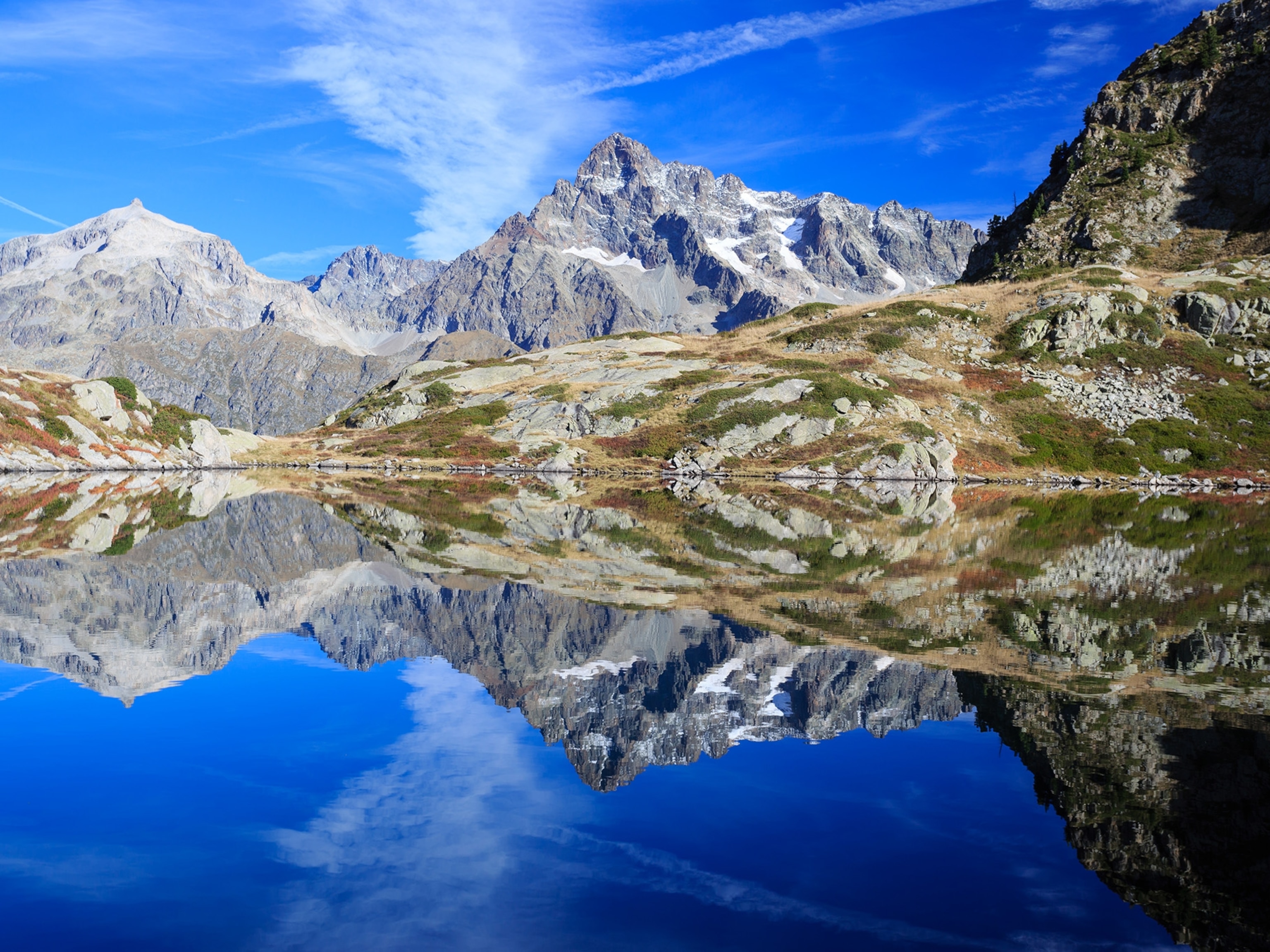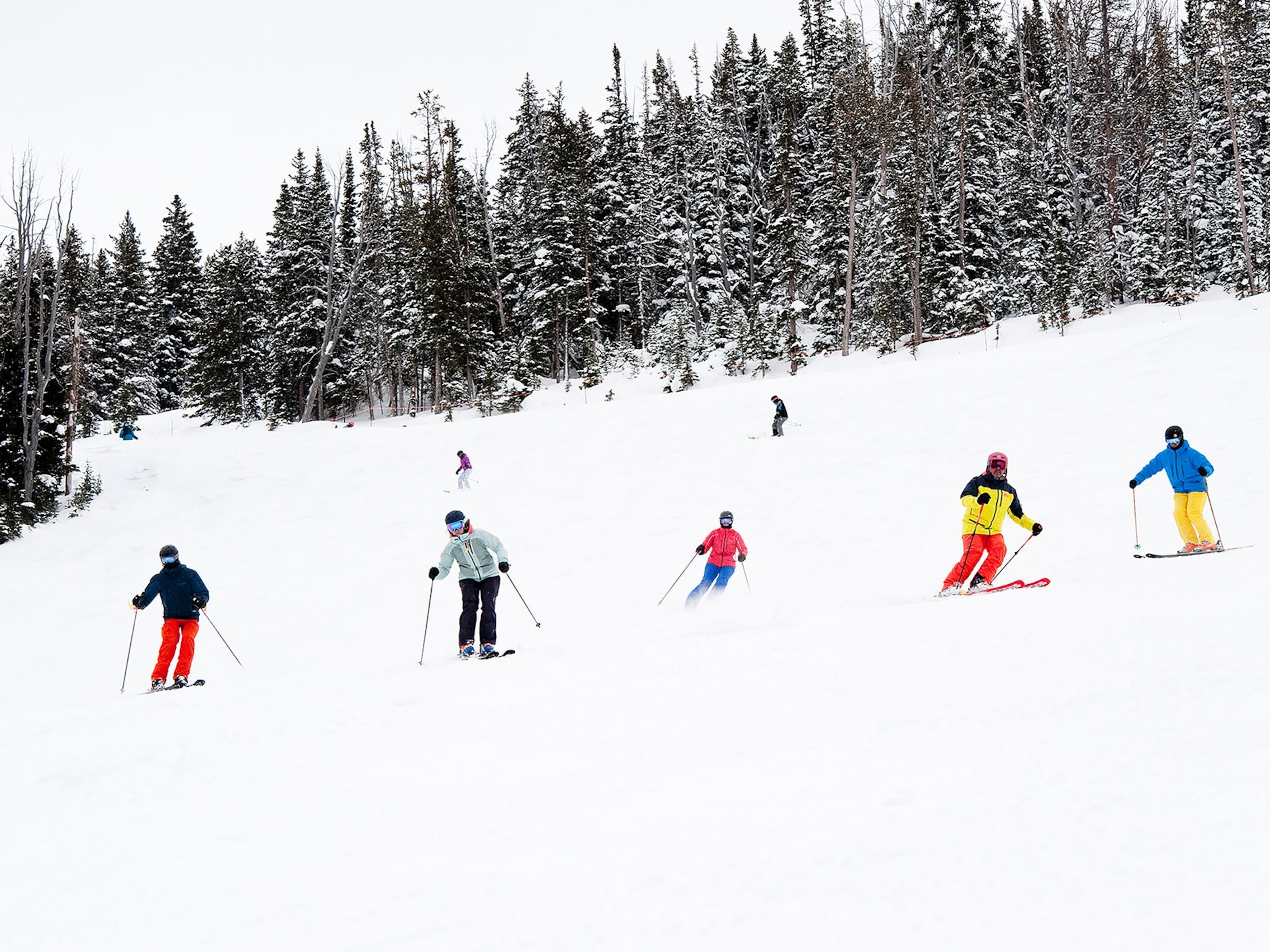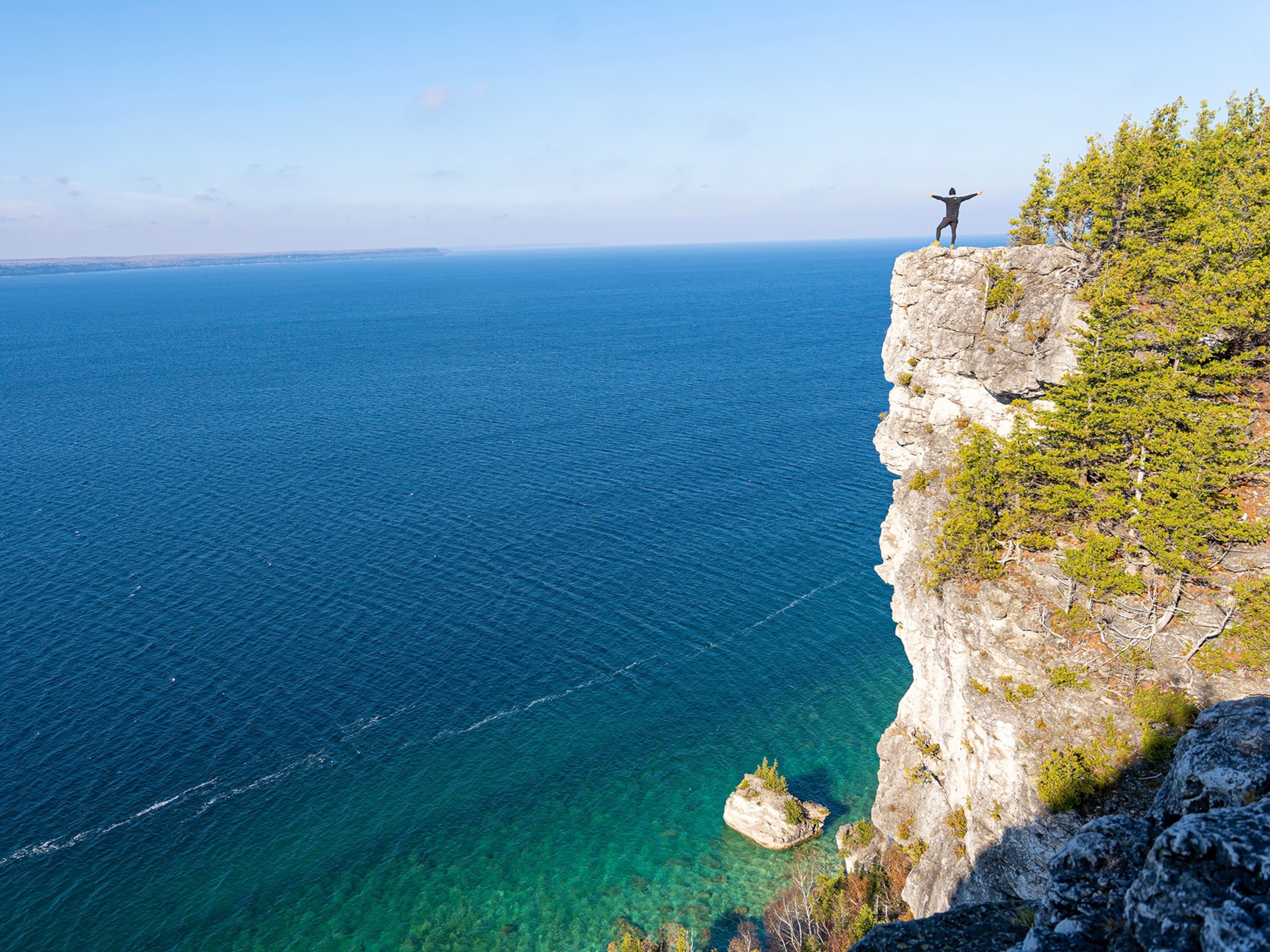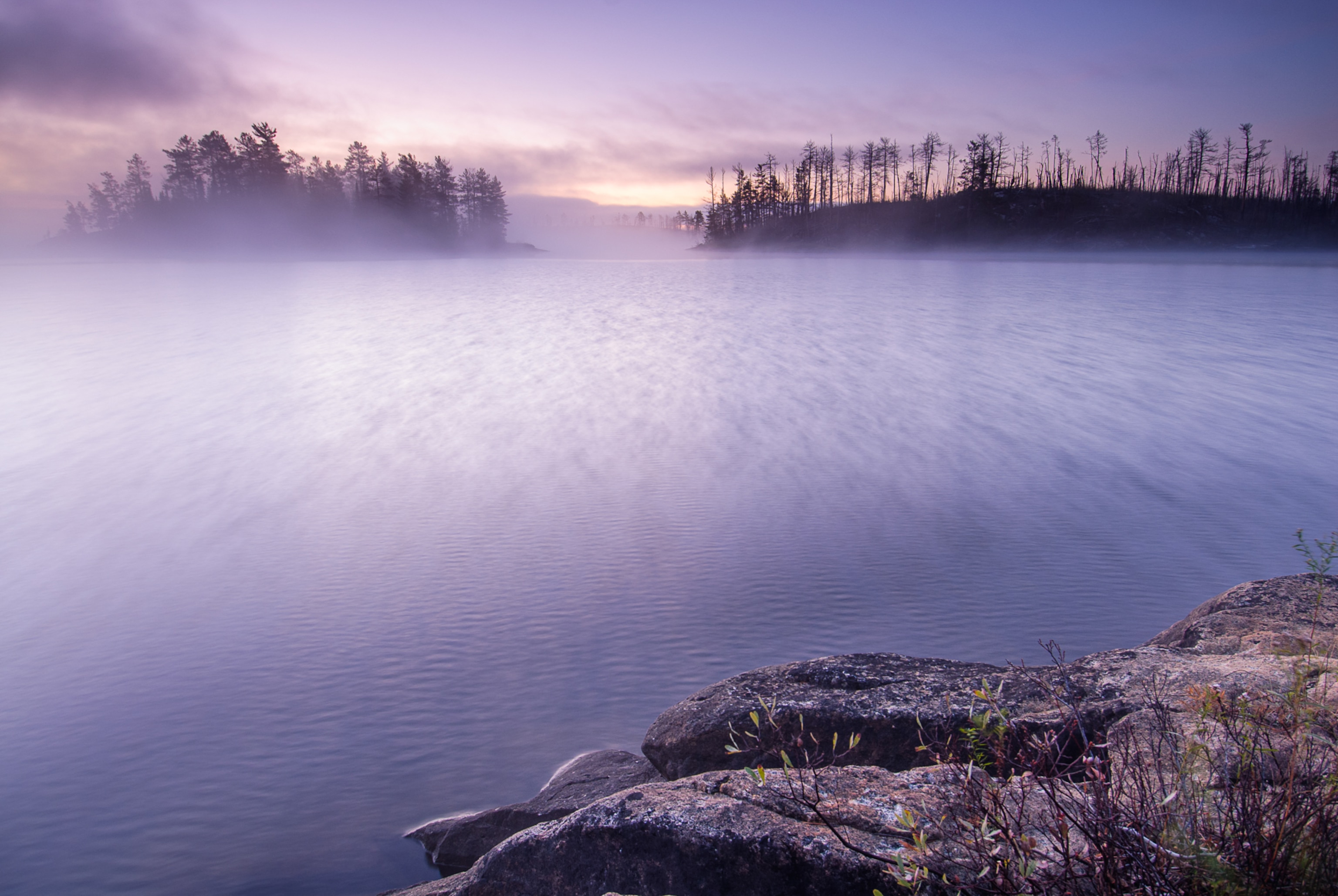
Paddling Minnesota’s ‘ancient superhighway’
The 250-mile Border Route offers big adventure, solitude, wildlife, and thousands of years of human history.
“I have never wanted to quit something so much in my entire life,” says Emily Ford.
The 29-year-old explorer from Duluth, Minnesota, had good reason to give up on her February attempt to be the first Black woman to solo ski across the state’s northern Border Route, an ambitious 250-mile journey that follows the thin blue line of lakes and rivers that separates the United States and Canada.
Of the few adventurers who attempt it every year, most paddle the route—which links Voyageurs National Park, the Boundary Waters Canoe Area Wilderness, and Lake Superior—in the summer. But Ford, accompanied by her dog, Diggins, chose to ski it, pulling her gear in a sled, facing open water, “ripping” winds, and minus-37-degree temperatures.
The nadir of the trip was the day Ford fell through the ice wearing most of her clothing. She survived by quickly starting a fire to dry out, which took until 4 a.m. On the flipside, she experienced near-complete solitude, running into “less than a thimbleful of people” the entire time.
That’s part of the allure of traversing this pristine, albeit difficult, wilderness. As climate change increases the likelihood of the northern Minnesota forests going up in smoke (fires in late summer 2021 shut the area down for the first time), the Border Route is becoming an increasingly coveted journey.
Not only is this region ideal for finding solitude among the freshwater lakes lined by granite outcroppings and towering pines, it retraces one of the most important Indigenous transportation routes in North America—portions of which are still used by the Ojibwe (also known as Chippewa) today.
“It’s literally the one place I’ve been where there’s no hustle and bustle,” says Ford. “The only thing to do is move, make it to your next camping spot, and realize the beauty around you.”
From gorgeous lakes to ancient pictographs to thriving Indigenous communities, here’s what travelers can find on this once-in-a-lifetime journey.
The ancient superhighway
For centuries, Minnesota’s original inhabitants, including the Cree, Dakota, Ojibwe, Assiniboine, and their descendants, used the Border Route as a watery superhighway, part of the 3,000-mile trade network between Montreal and Lake Athabasca. They knew these networks as well as a modern traveler knows the U.S. Interstate Highway System.
Until the last century, “nobody traveled by roads [in Minnesota],” says Anton Treuer, a professor of Ojibwe at Bemidji State University. “The only way to get around was by water. The rivers and lakes were the highways and arteries that connected the Indigenous people throughout the world.”
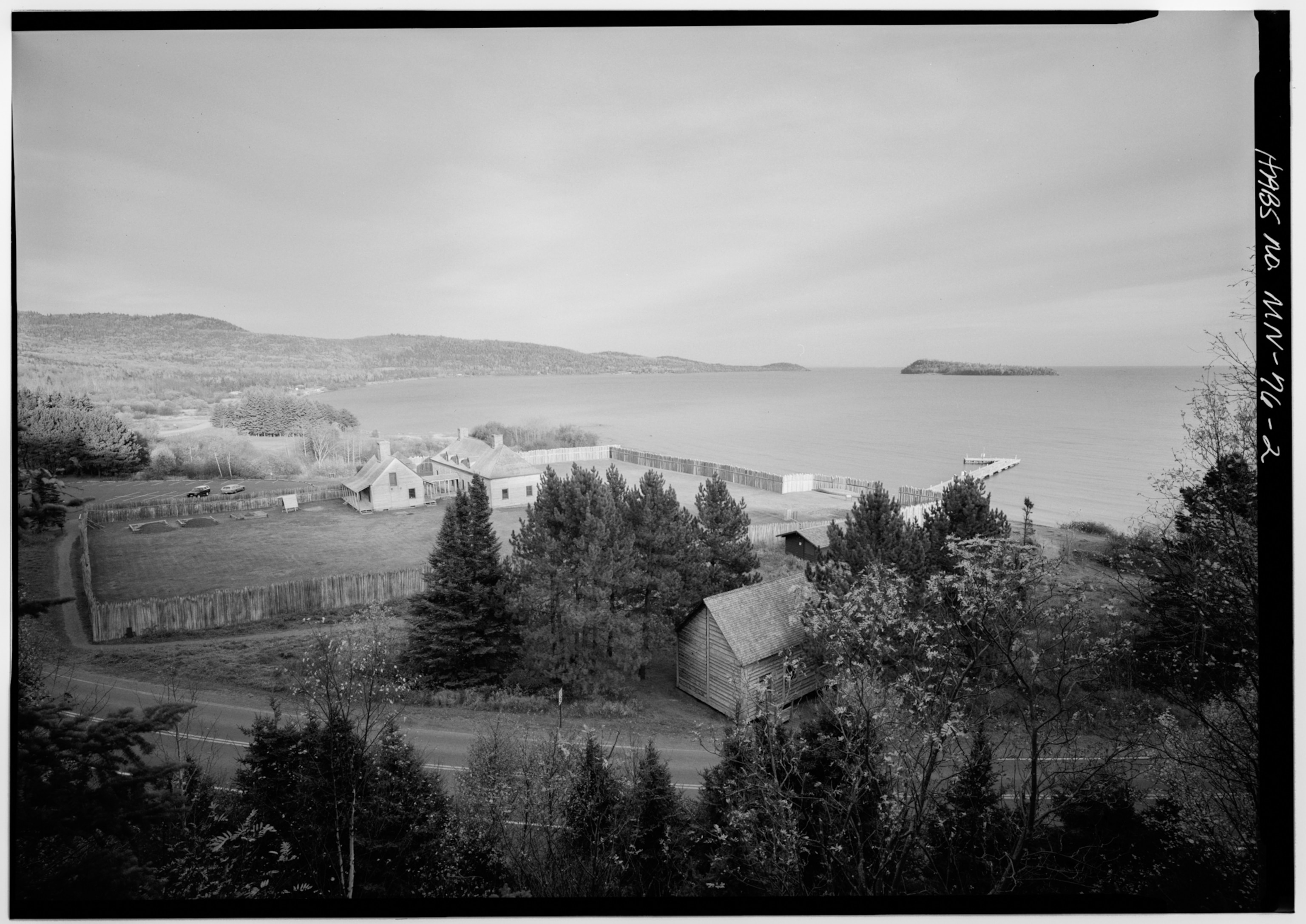
In 1730 a Cree guide named Auchagah drew a map on birch bark for the French-Canadian military officer Pierre Gualtier de Varennes, sieur de La Vérendrye, the first agent of New France to be stationed west of Lake Superior. His job was to find a passage to the Pacific Ocean. The map connected the settlement of Grand Portage on the northern shore of Lake Superior to Lake Winnipeg, hundreds of miles to the northwest. The map gave the French a foothold into the interior to trade for beaver pelts, a fur coveted by 18th-century fashionistas from London to Paris to Moscow.
(Here’s why northern Minnesota is one of Nat Geo’s Best of the World destinations.)
The route’s first obstacle: an 8.5-mile-long uphill overland footpath from Lake Superior known as the Grand Portage. It allowed paddlers to bypass the last 20 miles of the Pigeon River, a section with dangerous waterfalls, including one that dropped 120 feet between sheer cliffs. The wooded trail around it, however, wasn’t much easier, climbing 1,000 feet through thick, buggy boreal forest.
“….all our people, in dismay at the length of the portage, three leagues, mutinied and loudly demanded that I should turn back,” Le Vérendrye later wrote in a report.
But the men pushed on, and the route became the fastest way into fur country for the voyageurs, as these traders were known. More than half a century later, Grand Portage was the hub for a hundred fur-trading posts in a thousand-mile range.
A modern adventure
“The Border Route is the path of least resistance. You can easily see why this route was used for hundreds, if not for thousands, of years. It has long lakes and long portages,” explains Dave Freeman, a former National Geographic Adventurer of the Year, who has traveled the route several times, once with his wife, Amy Freeman, as part of an 11,700-mile, three-year journey across North America by kayak, canoe, and dogsled.
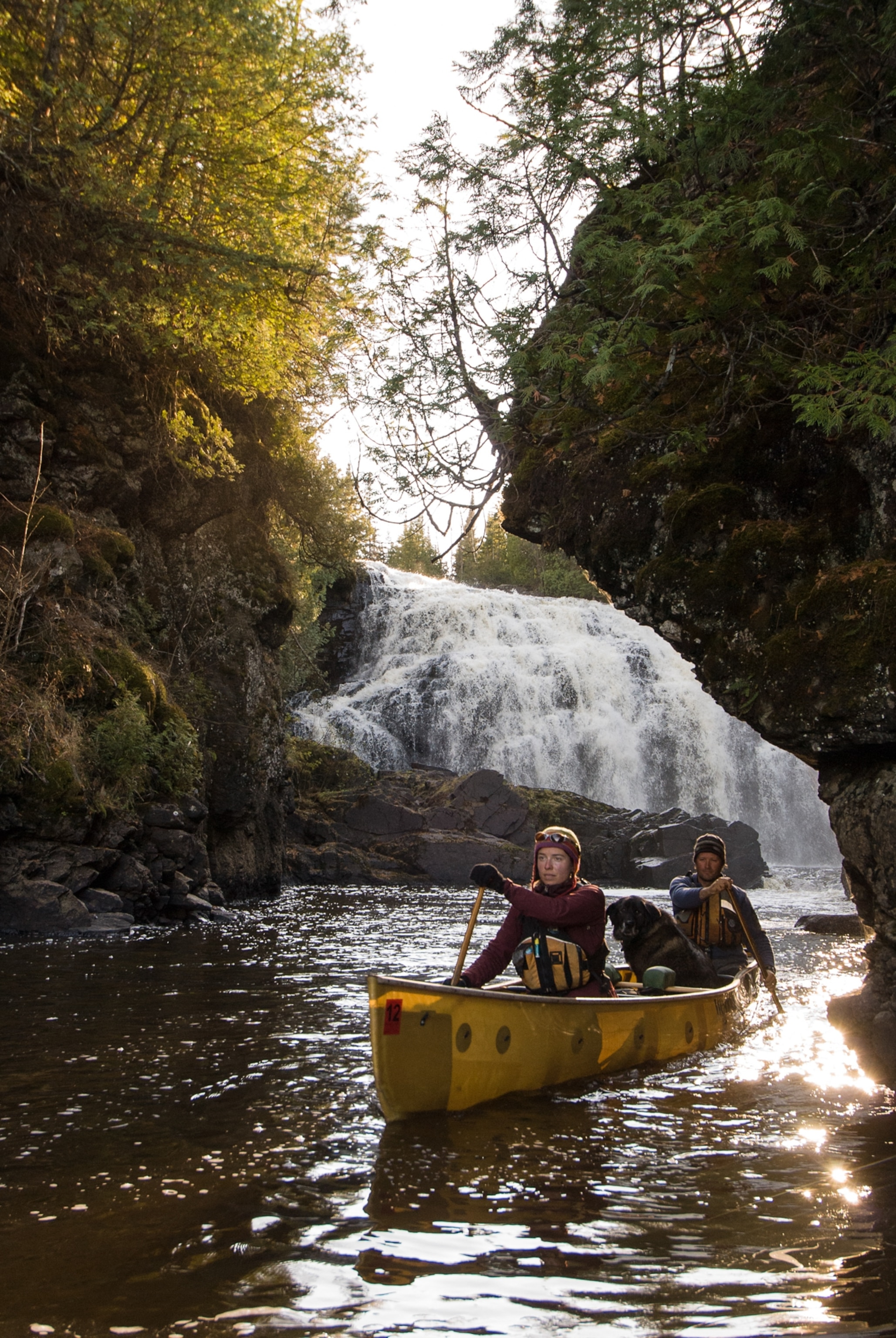
Navigating these lakes and rivers in winter or summer requires skill and perseverance. Some of these lakes are more like inland seas—Rainy Lake is 360 square miles, Lac La Croix is 46 square miles, and Saganaga Lake toward the eastern end covers 21 square miles.
In winter, falling through the ice is one of the biggest risks. In summer, wind creates dangerous waves on the enormous bodies of water.
“Big water makes bigger waves that could swamp a canoe, especially in a significant wind,” says Amy Freeman. “You might want to do it in July when the water is warm and fairly benign.”
There is no official starting point, but most paddlers travel the route from west to east to take advantage of the prevailing west winds. History buffs launch their canoes near Ontario’s Fort Frances on Rainy Lake, the site of the first European settlement west of Lake Superior, established in 1731. To avoid an international border crossing, some launch 12 miles east at Minnesota’s Rainy Lake Visitors Center in Voyageurs National Park.
(Voyageurs National Park is the best place to see northern lights in the U.S.)
Since so many of the rivers require portaging, the only tangible upstream current is 13 miles of Granite River that connects Saganaga Lake to Gunflint Lake on the second half of the journey. Shortly after the Granite River, at the 1,578-foot summit of the 4.6-mile-long Height of Land portage, the Border Route crosses the Laurentian Divide and water begins to flow south into Lake Superior.
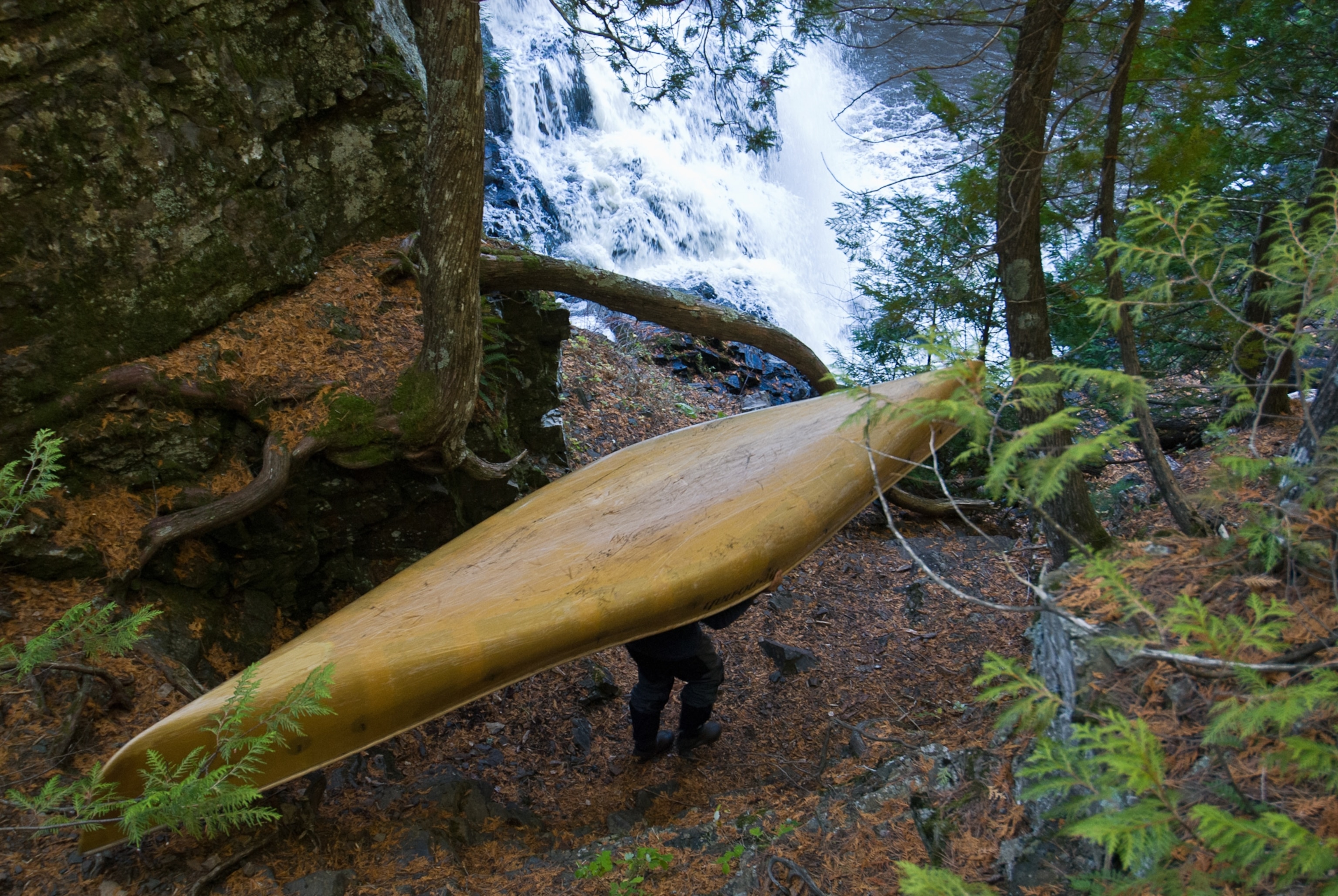
The official end point is always the same: the shore of Lake Superior, the largest of the Great Lakes, at the end of the Grand Portage. Unfortunately for Emily Ford, open water at the Pigeon River forced her to abort her winter trip early on March 11. In 28 days, she skied 180 miles from Crane Lake in Voyageurs National Park east to South Fowl Lake in the Boundary Waters Canoe Area Wilderness.
Still, Ford raised more than $7,000 (at press time) for the nonprofit Friends of the Boundary Waters Wilderness. The money will be used for kids from diverse backgrounds to take a week-long camping trip in the iconic destination.
“I’m hoping that me physically being outside in a place like this reduces the fear of being outside alone for people of color,” says Ford, who completed a solo 1,200-mile thru-hike of Wisconsin’s Ice Age Trail last winter.
“It’s really unusual for people to do that long of a trip,” says Jason Zabokrtsky, owner of Ely Outfitting Company, which has provided logistics and other support for paddlers attempting the Border Route. “It’s a trip you have to grow into.”
(This 740-mile canoe route is an unforgettable way to see New England.)
Linking to the past
It’s a badge of honor to complete the Border Route. Attempting it offers the chance to understand the area’s history and its original inhabitants, whose descendants still live in northern Minnesota.
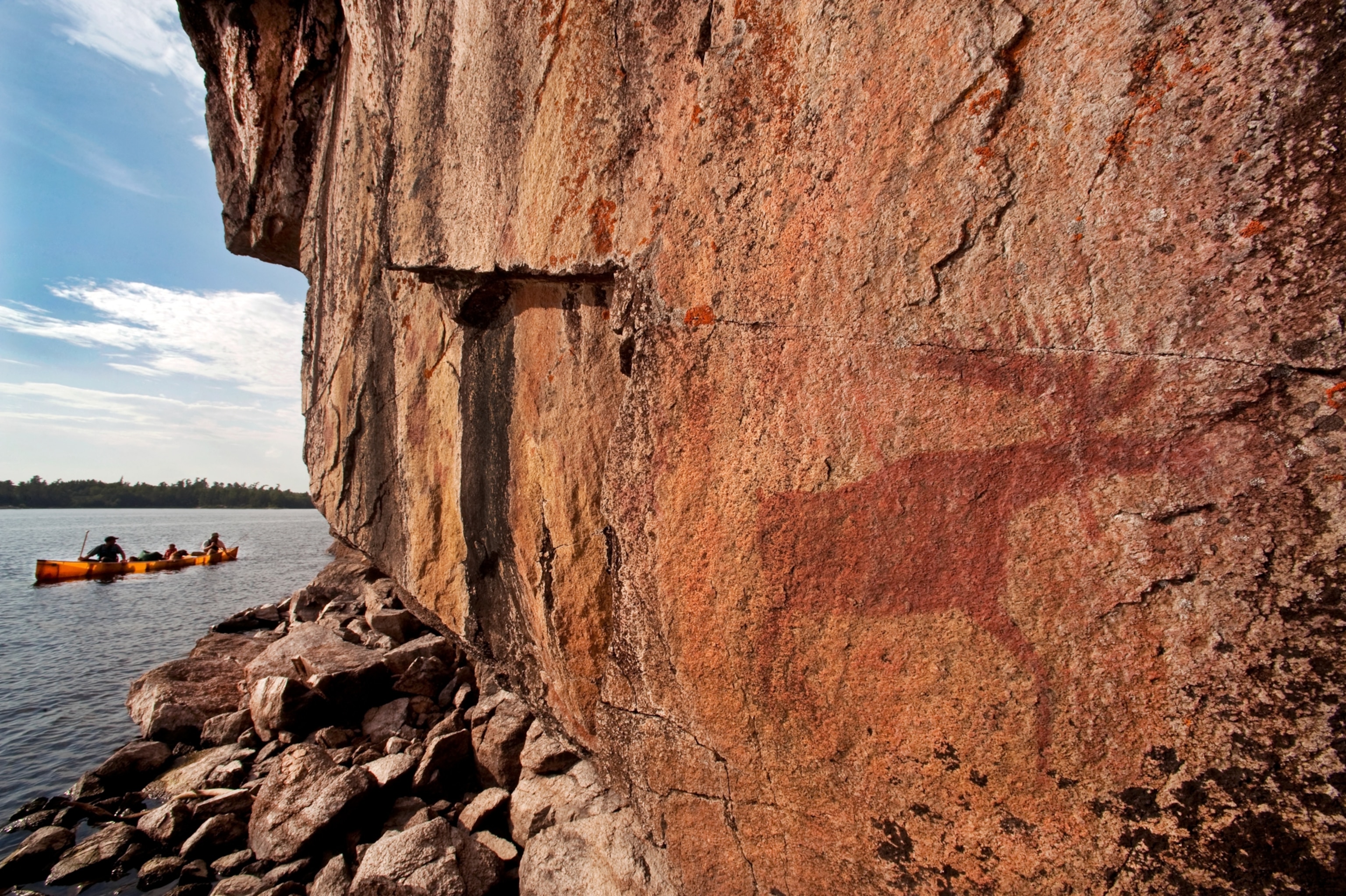
“The whole place is still their land,” says Ty Olson, an American filmmaker who completed a winter Border Route crossing in March 2021 “to reckon with what it means to be a white settler.” The highlight on his 27-day journey was serendipitously meeting a trio of snowmobilers from the Lac La Croix First Nation, a remote settlement of a few hundred Ojibwe (known as Saulteaux in Canada), across the border in Canada.
“There are 125 Ojibwe First Nations in Canada and the same number of Ojibwe bands across the U.S., seven of which are in Minnesota. Several of the Canadian Ojibwe still live in settlements along the route,” says Treuer, adding, “we’re not just an ancient historical presence.”
(Uncovering Native American history in Badlands National Park.)
On Lac La Croix, near a high bluff known as Warrior Hill on the Canadian shoreline, there are dozens of handprints and animal figures. A bull moose with a big rack stained in red ochre is painted on a cliff face that drops dramatically into the water.
The pictographs, in one of more than two dozen sites in the region, are estimated to be between 500 to 1,500 years old. On Knife Lake, in the Boundary Waters, flint-knapped siltstone artifacts date back to the Paleo-Indians, the first people to inhabit the region when the glaciers receded 11,000 to 12,500 years ago.
One of the beauties of the Border Route, as Treuer says, is that visitors can experience living within an Indigenous framework “as part of a circle of life, not its master.”

